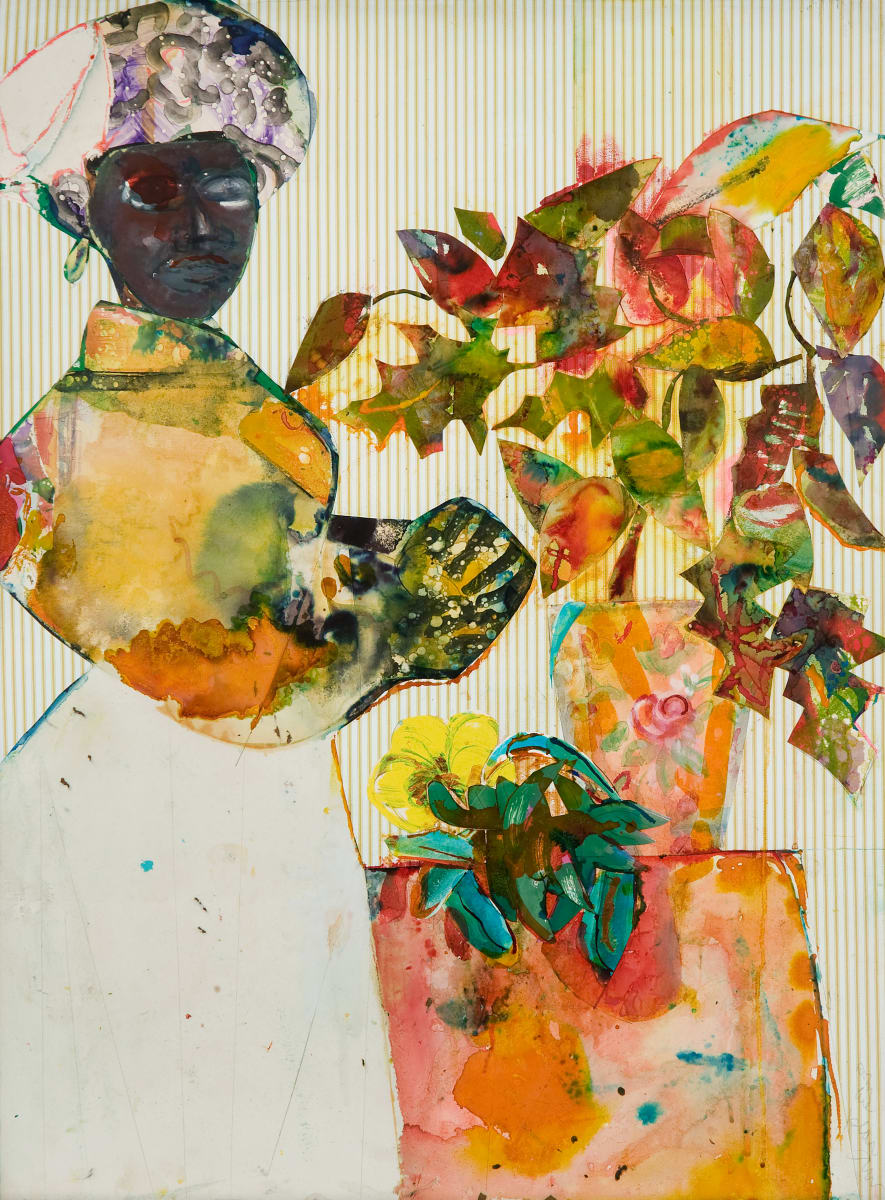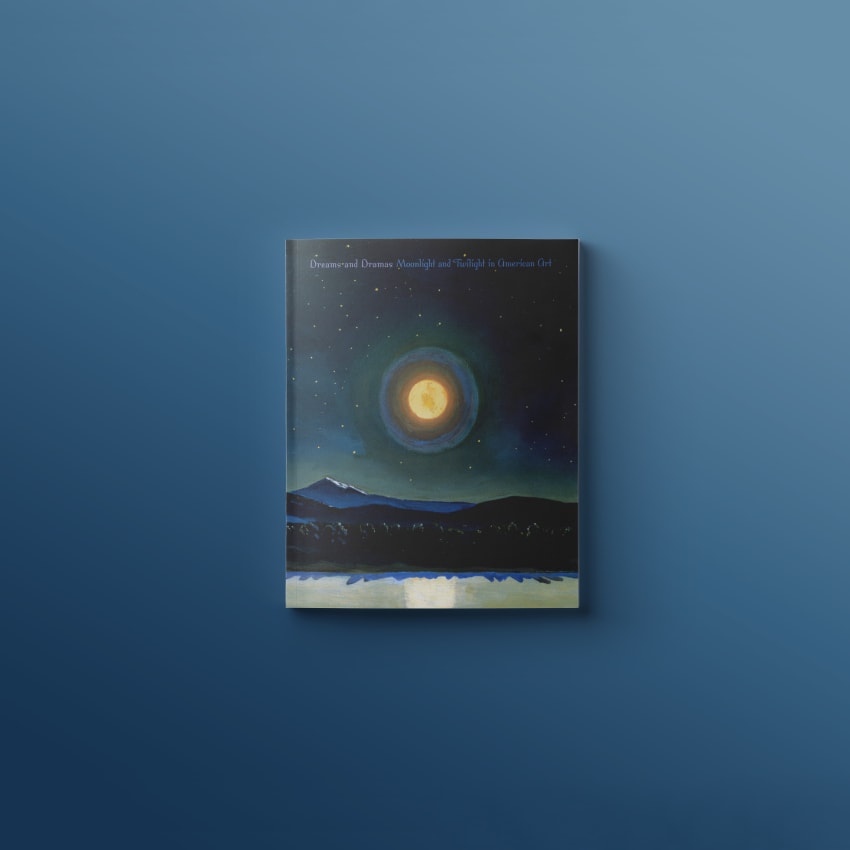
“It is not my aim to paint about the Negro in terms of propaganda . . . [but] the life of my people as I know it, passionately and dispassionately as Brueghel. My intention is to reveal through pictorial complexity the life I know.”
Best known for the vibrant collages he began making in the 1960s, Romare Bearden also created paintings, prints and photographs in the course of a prolific and inventive career. He was born in Charlotte, North Carolina, to middle-class African-American parents; during the Great Migration his family resettled in New York. Although Bearden lived in North Carolina only briefly as a child, he spent summers there with his extended family. African-American life both in urban settings and in the rural South offered him a rich source of subject matter. The Bearden family took an active role in the Harlem Renaissance, and their circle of friends included Langston Hughes, Duke Ellington, and W. E. B. Du Bois.
Best known for the vibrant collages he began making in the 1960s, Romare Bearden also created paintings, prints and photographs in the course of a prolific and inventive career. He was born in Charlotte, North Carolina, to middle-class African-American parents; during the Great Migration his family resettled in New York. Although Bearden lived in North Carolina only briefly as a child, he spent summers there with his extended family. African-American life both in urban settings and in the rural South offered him a rich source of subject matter. The Bearden family took an active role in the Harlem Renaissance, and their circle of friends included Langston Hughes, Duke Ellington, and W. E. B. Du Bois.
In 1935 Bearden completed a degree at New York University, where he took many art courses. Already an accomplished cartoonist and illustrator, Bearden immediately began further study with former Dadaist George Grosz at the Art Students League. Later, after serving at domestic posts during World War Two, Bearden traveled to Paris with assistance of the G.I. Bill to study art history and philosophy at the Sorbonne. Although he began his artistic career as a social realist, his time in Europe steered his work in a more abstract and improvisational direction. During this period, Bearden engaged in intense study of the art historical tradition, assimilating themes and, at times, compositional structures of past works.
From the late 1930s to 1967 Bearden held intermittent employment as a caseworker for the New York City Department of Social Services. His job gave him glimpses of the struggles of people, particularly New York Gypsies, to keep their culture alive amid the pressures of urban life. By the same token, Bearden was keenly aware that the rural, African-American culture of the South was disappearing, and he felt a strong pull toward documenting it in his work. With regard to this subject matter, Bearden wrote in 1969, “It is not my aim to paint about the Negro in terms of propaganda . . . [but] the life of my people as I know it, passionately and dispassionately as Brueghel. My intention is to reveal through pictorial complexity the life I know.” (1)
For Bearden, the medium of collage, which he adopted in the early 1960s, provided the means to this end. Each piece brings together a vast array of materials, patterns, and colors, synthesizing all into an elegant whole. Bearden’s intellectual frame of reference is similarly broad and encompasses everything from popular culture, to religion, to classical myth. In both design and spirit, his work celebrates the diversity of the human community. Bearden used the phrase “prevalence of ritual” to describe his view of continuity across generations and cultures, in which truths specific to the African-American experience find expression in their connection to universal themes and imagery.
In the late 1960s Bearden tended to treat his human subjects as monumental, iconic, and magnificent, no matter what their social standing. Posed frontally or in profile, in the foreground, they often possess the formality of figures in ancient Egyptian or Greek art, or in Mexican murals or quattrocento Italian painting. In the 1970s, landscape motifs became more prominent in Bearden’s work. Beginning in 1973, Bearden began spending part of each year at a second home on the Caribbean island of St. Martin, where his wife, Nanette, had family roots.
Quite early in his career, Bearden developed ties with downtown galleries and artists, including fellow jazz lover Stuart Davis. He regularly showed his work in New York and elsewhere beginning in 1939, including at a series of sell-out shows at Cordier & Ekstrom, New York, in the 1960s and 70s. By the time of his death in 1988, he had achieved critical success and paved the way for future African-American artists through his involvement with the Studio Museum of Harlem and the Cinque Gallery.
Bearden’s work is included in major public collections including the Metropolitan Museum of Art, the Whitney Museum of American Art, the Philadelphia Museum of Art, the Museum of Fine Arts, Boston, and the Studio Museum in Harlem, among others. He has had retrospectives at the Mint Museum of Art (1980), the Detroit Institute of the Arts (1986), and the Studio Museum in Harlem (1991). In 2003 the National Gallery in Washington, D.C., organized a major retrospective of Bearden’s work that subsequently traveled to the San Francisco Museum of Modern Art, the Dallas Museum of Art, the Whitney Museum of American Art, and the High Museum of Art in Atlanta.
1. Romare Bearden, “Rectangular Structure in My Montage Paintings,” Leonardo 2 (January 1969), quoted in Alexandra Anderson-Spivy, “Romare Bearden: Modern Classicist,” Romare Bearden: The Human Condition (New York: ACA Galleries, 1991), n. p.













